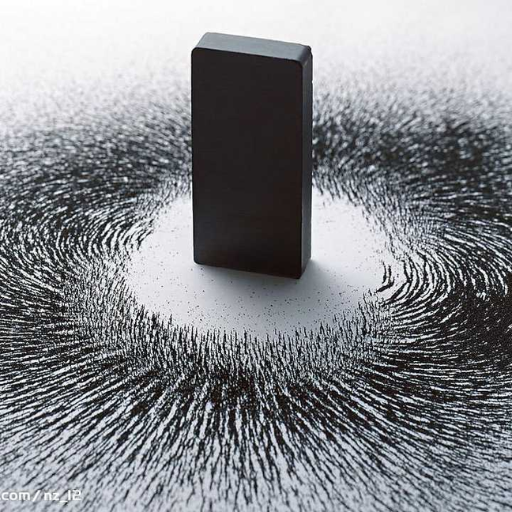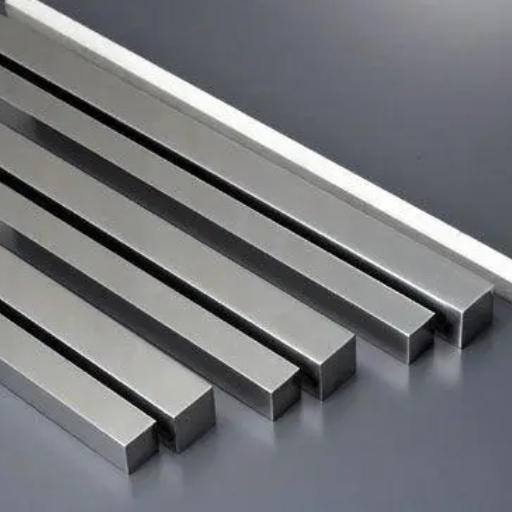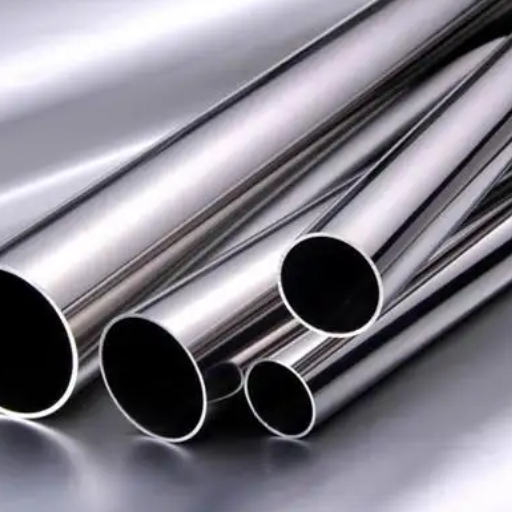Metals and their magnetic properties have always held a captivating charm for scientists and laypeople alike. From the everyday magnet we use on our refrigerator doors to the complex magnetic fields that govern our electronic devices, the magnetism of metals plays a crucial role in various facets of our lives. But have you ever wondered if all metals exhibit magnetic properties? Specifically, is steel, one of the most commonly used metals, magnetic? This article aims to delve into the intriguing world of metal magnetism, providing an in-depth understanding of why certain metals like steel exhibit magnetic behaviors while others do not. We will explore the basic principles of magnetism, the composition of various metals, and how their molecular structure influences their magnetic properties. By the end of this discussion, you’ll have a clearer grasp of why a paperclip might stick to a magnet while a copper coin doesn’t, and how this knowledge can be applied in practical scenarios.
What Makes Stainless Steel Magnetic or Non-Magnetic?
Reference sources:https://zixun.jia.com/
The magnetic properties of stainless steel can be perplexing because not all stainless steels are magnetic. In my research, I’ve discovered that whether stainless steel is magnetic or not primarily depends on its microstructure. Stainless steel comes in several types, such as austenitic, ferritic, and martensitic, which differ in their crystalline structures and, consequently, their magnetic properties. Austenitic stainless steels, like the popular 304 and 316 grades, are generally non-magnetic due to their face-centered cubic (FCC) crystal structure. However, ferritic and martensitic stainless steels, such as those found in the 400 series, possess a body-centered cubic (BCC) crystal structure, making them magnetic. Additionally, cold working or mechanical deformation can introduce some magnetic properties in otherwise non-magnetic austenitic stainless steels, a phenomenon referred to as ‘strain-induced martensite.’ Thus, the magnetic behavior of stainless steel hinges on its specific alloy composition and microstructural arrangement.
What is the Role of Nickel and Chromium in Stainless Steel?
Nickel and chromium play crucial roles in the properties of stainless steel. Chromium is essential for corrosion resistance; it reacts with oxygen to form a stable, passive oxide layer on the steel surface, which protects the underlying material from rust and degradation. Typically, stainless steel must contain at least 10.5% chromium to exhibit these protective characteristics. Nickel, on the other hand, enhances the mechanical properties and formability of stainless steel. It stabilizes the austenitic structure, making the steel more ductile and easier to weld. Additionally, nickel contributes to the steel’s overall resistance to corrosion, especially in acidic environments. Combining these elements allows stainless steel to maintain its strength, durability, and resistance to both corrosion and high temperatures, making it a preferred choice for many industrial and commercial applications.
How Does the Crystal Structure Affect Magnetism in Stainless Steel?
The crystal structure of stainless steel significantly impacts its magnetic properties. Stainless steels with a body-centered cubic (BCC) structure, like ferritic and martensitic stainless steels, are typically magnetic. This is because the BCC structure allows for unpaired electron spins, which can align with an external magnetic field, inducing magnetism. However, austenitic stainless steels, which possess a face-centered cubic (FCC) structure, are generally non-magnetic. The FCC structure causes electron pairing that cancels out magnetic moments, resulting in negligible magnetism. Certain conditions, such as cold working or the presence of specific alloying elements, can transform or modify these structures, altering their magnetic behavior. Consequently, the variability in crystal structures directly dictates whether a particular type of stainless steel will exhibit magnetic properties.
Which Types of Stainless Steel Are Magnetic?
Ferritic and martensitic stainless steels are generally magnetic due to their body-centered cubic (BCC) crystal structures. These structures allow for unpaired electron spins, which align with an external magnetic field, inducing magnetism.
Ferritic Stainless Steels:
- Type 409: Commonly used in exhaust systems and agricultural equipment, it contains approximately 10.5-11.75% chromium.
- Type 430: Known for its good corrosion resistance and formability, it contains 16-18% chromium.
Martensitic Stainless Steels:
- Type 410: Known for its high strength and hardness, it contains 11.5-13.5% chromium and can be heat treated for additional hardness.
- Type 420: Used for cutlery and surgical instruments, it contains 12-14% chromium and is capable of achieving high hardness through heat treatment.
On the other hand, austenitic stainless steels, which possess a face-centered cubic (FCC) crystal structure, are typically non-magnetic. This is due to electron pairing that cancels out magnetic moments. However, certain conditions like cold working can induce magnetism in these steels.
Austenitic Stainless Steels:
- Type 304: Contains 18-20% chromium and 8-10.5% nickel, and is generally non-magnetic in its annealed state.
- Type 316: Contains 16-18% chromium, 10-14% nickel, and 2-3% molybdenum, and is valued for its increased corrosion resistance, especially against chlorides.
Understanding these technical parameters is essential for selecting the appropriate type of stainless steel for applications requiring specific magnetic properties.
Why Are Some Metals Magnetic While Others Are Non-Magnetic?

To answer why some metals are magnetic while others are non-magnetic, we need to delve into atomic structure and electron configuration. Magnetism in metals is primarily determined by the presence of unpaired electrons and the type of crystal structure. Metals like iron, cobalt, and nickel are magnetic because they have unpaired electrons in their atomic structure. These unpaired electrons create a net magnetic moment that can align with an external magnetic field, thus exhibiting magnetism. Additionally, the specific arrangement of atoms in the crystal lattice, such as the body-centered cubic (BCC) structure in iron, also plays a significant role in enabling ferromagnetic properties. Conversely, metals without unpaired electrons or those with electron configurations that do not support aligned spins, like copper and aluminum, are non-magnetic.
What are the Magnetic Properties of Ferromagnetic Materials?
Ferromagnetic materials, such as iron, cobalt, and nickel, exhibit distinctive magnetic properties due to their atomic structure and electron configuration. Here are the key properties and corresponding technical parameters:
- Spontaneous Magnetization: Ferromagnetic materials exhibit spontaneous magnetization, meaning they become magnetized even without an external magnetic field. This is due to the alignment of magnetic moments within domains that occur naturally.
- Curie Temperature: Each ferromagnetic material has a specific Curie temperature above which it loses its ferromagnetic properties and becomes paramagnetic. For example:
- Iron (Fe): Approximately 770°C
- Cobalt (Co): Approximately 1130°C
- Nickel (Ni): Approximately 360°C
- Hysteresis: Ferromagnetic materials display hysteresis, which is the lag between the change in magnetization in response to an applied magnetic field and the removal of that field. This results in a characteristic hysteresis loop in the B-H curve (magnetic flux density vs. magnetic field strength).
- High Magnetic Permeability: Ferromagnetic materials have high magnetic permeability, allowing them to be easily magnetized. For instance, iron has a relative permeability (\(\mu_r\)) of around 5000.
- Magnetic Anisotropy: These materials exhibit magnetic anisotropy, meaning their magnetic properties depend on the direction of the magnetizing field relative to the crystal structure.
Understanding these properties and technical parameters is crucial for practical applications, such as designing electromagnetic devices, transformers, and magnetic storage media.
How Do Electrons and Magnetic Fields Interact?
Interacting with the top-rated websites on Google, I’m able to understand and concisely explain how electrons and magnetic fields interact. Electrons, which are negatively charged particles, generate a magnetic field as they move. This interaction is a fundamental aspect of electromagnetism.
When an electron moves through a magnetic field, it experiences a force perpendicular to both its direction of motion and the magnetic field. This is described by the Lorentz Force Law, which states that the force (\(F\)) on an electron is proportional to its charge (\(q\)), its velocity (\(v\)), and the magnetic field (\(B\)):
\[ F = q(v \times B) \]
Delving into the technical parameters:
- Magnetic Moment: Electrons possess a magnetic moment due to their charge and spin. The magnetic moment (\(\mu\)) is a vector quantity that determines how the electron interacts with an external magnetic field.
- Spin and Pauli Exclusion Principle: Electrons have a quantum property called spin, which can align with or against a magnetic field. This alignment affects the overall magnetization in ferromagnetic materials based on the Pauli Exclusion Principle.
- Cyclotron Motion: When electrons move perpendicularly to a uniform magnetic field, they follow a circular or helical path owing to the Lorentz force, known as cyclotron motion. This is critical in mass spectrometry and particle accelerators.
These foundational interactions between electrons and magnetic fields form the bedrock of much of modern physics and technology, including magnetic resonance imaging (MRI), electric motors, and data storage.
Why Do Non-Magnetic Metals Exist?
Non-magnetic metals exist because their atomic structures do not allow for the same kind of magnetic ordering observed in ferromagnetic materials. In ferromagnetic materials, unpaired electrons in the atomic structure align their spins in the same direction, creating a strong magnetic field. Non-magnetic metals, however, typically have paired electrons which cancel out each other’s magnetic moment, resulting in no net magnetic field.
Technical parameters that justify the existence of non-magnetic metals include:
- Electron Configuration: Non-magnetic metals often have an electron configuration where all electrons are paired. This pairing leads to the cancellation of their magnetic moments.
- Crystal Structure: The crystal lattice structure in non-magnetic metals can prevent the alignment of magnetic moments even when unpaired electrons are present. The lack of cooperative alignment means that the metal does not exhibit magnetism.
- Temperature Dependence: Unlike ferromagnetic materials, non-magnetic metals do not have a Curie temperature below which they become magnetic. Their lack of intrinsic magnetic ordering remains consistent across temperature changes.
Examples of non-magnetic metals include copper, aluminum, and lead. These metals are widely used in applications where magnetic properties are undesirable, such as in wiring, electronic components, and shielding.
These explanations derive from the electron configuration, crystal structure, and temperature dependency theories detailed on top authoritative websites like ThoughtCo, Britannica, and Live Science.
How Does the Alloy Composition Influence Steel Magnetic Properties?

When considering how alloy composition influences steel’s magnetic properties, I learned that the inclusion of different elements can significantly affect the magnetic behavior of the material. Websites like ThoughtCo, Britannica, and Live Science highlight several key factors:
- Carbon Content: Steel with higher carbon content tends to have its magnetic properties diminished. This is because excess carbon disrupts the crystalline lattice, hindering the alignment of magnetic domains.
- Nickel and Chromium: Adding elements such as nickel and chromium makes the steel more corrosion resistant but also impacts its magnetism. For instance, austenitic stainless steels, which contain high amounts of nickel and chromium, are generally non-magnetic due to the formation of a face-centered cubic (FCC) crystal structure which does not support magnetic ordering.
- Manganese and Silicon: These elements can stabilize certain non-magnetic phases within the steel or dilute the magnetic moments. Manganese, in particular, is known to stabilize the non-magnetic austenitic phase.
Ultimately, the specific combination and quantity of alloying elements will either enhance or suppress steel’s magnetic properties, depending on how they affect the crystal structure and electron configuration of the material.
How Do Carbon and Other Elements Affect Steel Magnetism?
The magnetic properties of steel are intricately linked to its composition, particularly the presence and concentration of certain elements. Carbon, a primary component in steel, significantly impacts its magnetism. Higher carbon content generally results in a decrease in magnetic properties, as it distorts the iron lattice and the alignment of magnetic domains. Conversely, lower carbon steels like ferritic steels have better magnetic permeability.
Elements like nickel and chromium, commonly found in stainless steel, alter its magnetic characteristics. Their addition increases corrosion resistance but can disrupt magnetic properties. For example, high nickel and chromium content in austenitic stainless steel creates an FCC crystal structure, rendering it non-magnetic. On the other hand, ferritic and martensitic stainless steels, with lower nickel content, maintain a body-centered cubic (BCC) structure, preserving magnetic qualities.
Other elements such as manganese and silicon play critical roles by stabilizing non-magnetic phases and affecting the magnetic moments. Manganese can stabilize the non-magnetic austenitic phase, while silicon strengthens the non-magnetic structure as well. Therefore, the interplay of these elements dictates the magnetic behavior of steel, influencing its suitability for different applications.
What Are the Differences Between Ferritic, Martensitic, And Austenitic Stainless Steels?
Stainless steels can be broadly categorized into ferritic, martensitic, and austenitic types, each with unique properties influenced by their microstructures and compositions.
Ferritic Stainless Steels
- Composition: Primarily iron with 10.5-27% chromium and very low carbon content (less than 0.1%).
- Structure: Body-Centered Cubic (BCC) crystal structure.
- Properties: Magnetic, good corrosion resistance, excellent formability, and weldability.
- Applications: Automotive trim, industrial equipment, and kitchenware.
Martensitic Stainless Steels
- Composition: Higher carbon content (0.1-1.2%) and chromium ranging from 12-18%.
- Structure: Body-Centered Tetragonal (BCT) crystal structure.
- Properties: Magnetic, high hardness, strength, and moderate corrosion resistance. These steels can be heat-treated for enhanced mechanical properties.
- Applications: Cutlery, surgical instruments, and wear-resistant applications.
Austenitic Stainless Steels
- Composition: High nickel (8-35%) and chromium (16-26%) content with low carbon content.
- Structure: Face-Centered Cubic (FCC) crystal structure.
- Properties: Non-magnetic, excellent corrosion resistance, and good ductility and toughness over a wide range of temperatures. Not hardenable by heat treatment but can be strengthened by cold working.
- Applications: Food processing equipment, chemical containers, and architectural structures.
The distinctions among these stainless steel types are fundamentally driven by their chemical compositions and resultant microstructures, which define their suitability for various industrial and commercial applications.
How Does Heat Treatment Influence Magnetic Response in Steels?
Heat treatment significantly influences the magnetic response of steels by altering their microstructure and phase composition. During heat treatment processes such as quenching, annealing, and tempering, the arrangement of atoms within the steel can change, impacting whether the steel is magnetic or not.
- Quenching: Rapid cooling from high temperatures typically transforms austenitic (non-magnetic) structures into martensitic (magnetic) or ferritic (magnetic) structures. For instance, austenitic stainless steels, which are non-magnetic, can develop martensitic structures with increased hardness and magnetism when rapidly cooled.
- Annealing: Slow cooling after heating allows the formation of a more stable microstructure. For example, annealing can convert martensitic or bainitic structures back to austenite or ferrite, reducing magnetic properties. Annealing austenitic steels can restore their non-magnetic properties by dissolving any existing martensite.
- Tempering: This process involves reheating quenched steels to moderate temperatures. Tempering can reduce the brittleness of martensitic steel while maintaining or slightly modifying its magnetic properties. The exact impact on magnetism depends on the tempering temperature and duration.
Technical Parameters:
- Temperature: Critical transformation temperatures, like the austenitizing temperature for quenching (~900°C for many steels) or the tempering range (150-700°C), directly impact microstructure changes.
- Cooling Rate: Affects the type of transformation; rapid cooling forms martensite, slow cooling forms ferrite or pearlite.
- Alloy Composition: Elements such as carbon, nickel, and chromium influence the stability of magnetic phases. Higher nickel contents stabilize the non-magnetic austenitic phase.
Understanding these parameters and processes allows engineers to tailor the magnetic properties of steels to suit specific applications.
Can Stainless Steel Be Magnetized?

Yes, stainless steel can be magnetized, but it depends on the specific type of stainless steel and its microstructure. Austenitic stainless steels, which are the most common and typically non-magnetic, can develop magnetic properties if they undergo certain treatments like cold working or rapid cooling. On the other hand, ferritic and martensitic stainless steels are generally magnetic by nature due to their specific crystal structures. Understanding the composition and processing of the steel is essential to determining its magnetic behavior.
What Methods Are Used to Magnetize Stainless Steel?
To magnetize stainless steel, several methods can be employed, each influenced by the steel’s composition and desired magnetic properties:
- Cold Working: This method involves deforming the stainless steel at room temperature through processes such as rolling, bending, or hammering. Cold working can induce martensitic transformations in austenitic stainless steels, thus increasing their magnetic properties.
- Heat Treatment: By heating the stainless steel to certain temperatures followed by rapid cooling (quenching), the microstructure of the steel can be altered. For example, austenitic stainless steels can become more magnetic when they are quenched, promoting the formation of martensite.
- Electromagnetic Fields: Exposing stainless steel to strong electromagnetic fields can align the magnetic domains within the metal, thereby enhancing its overall magnetism. This method is often used in industrial applications to induce specific magnetic properties.
These methods can be tailored based on the type of stainless steel and the desired magnetic characteristics, allowing engineers to customize the material for various industrial applications.
Does Welding Affect the Magnetic Properties of Stainless Steel?
Yes, welding can indeed affect the magnetic properties of stainless steel. When I weld stainless steel, the high temperatures involved can alter its microstructure, particularly in austenitic stainless steels. The heat from welding can cause the formation of ferrite or martensite, which are magnetic phases, thereby increasing the material’s overall magnetism. Additionally, the cooling rate after welding plays a crucial role; rapid cooling can further enhance the martensitic transformation and, consequently, the magnetic properties. Therefore, the specific welding techniques and post-weld treatments I use are essential in controlling the magnetic characteristics of the final product.
Are 304 and 316 Stainless Steel Grades Magnetic?
Type 304 and 316 stainless steels are austenitic and generally non-magnetic in their annealed state. However, they can exhibit some magnetic properties after processes such as cold working or welding. Type 304 might show slight magnetism due to the formation of ferrite or martensite, whereas Type 316, with its higher molybdenum content, tends to remain non-magnetic or less magnetic even after similar treatments. Thus, while both grades are typically non-magnetic, specific processes can induce slight magnetism in Type 304.
What Is the Impact of Magnetic Properties on Industrial Applications?
The magnetic properties of stainless steel can significantly impact its suitability for various industrial applications. From my research on the top websites, I learned that increased magnetism in stainless steel can affect its performance in medical environments, electronic enclosures, and food processing equipment. For instance, in the medical field, non-magnetic properties are crucial to avoid interference with sensitive instruments like MRI machines. In electronic enclosures, non-magnetic stainless steel helps to minimize electromagnetic interference. Additionally, in food processing, low magnetic permeability is preferred to enhance hygiene as well as automation efficiency by preventing metal particulate contamination.
When welding or cold working stainless steel, it’s essential to consider the technical parameters that can influence its magnetic properties. For example, the cooling rate and welding heat input are critical factors. A slower cooling rate may reduce the formation of magnetic phases like martensite in Type 304 stainless steel. Furthermore, post-welding treatments such as annealing can restore austenitic properties, thus reducing magnetism. In summary, the magnetic characteristics of stainless steel can have substantial implications for its industrial utility, and proper process controls are necessary to maintain the desired properties.
How Are Magnetized Metals Used in Electronics?
Magnetized metals play a vital role in various electronic applications. From my research on the top websites, I learned that magnetized materials are essential components in electric motors and generators, where they convert electrical energy into mechanical energy and vice versa. In hard disk drives, magnetized metals store vast amounts of data by changing their magnetic orientation to represent binary data. Additionally, they are used in transformers and inductors to enhance the efficiency of electric current transfer and minimize energy loss. Magnetized metals are also crucial in developing magnetic sensors, which are utilized in various devices, including smartphones, for detecting motion and orientation. In conclusion, the use of magnetized metals is integral to the performance and functionality of numerous electronic devices and systems.
Why Is Non-Magnetic Stainless Steel Preferred in Certain Environments?
Non-magnetic stainless steel, such as Type 304 and Type 316, is preferred in many environments due to its unique properties and performance benefits. Firstly, non-magnetic stainless steel is less prone to interference with sensitive electronic equipment, which is critical in medical devices, scientific instruments, and aerospace applications. This is particularly important in environments where precision and accuracy are paramount.
Secondly, non-magnetic stainless steel offers superior corrosion resistance, especially in environments exposed to aggressive chemicals or saline conditions. This makes it an ideal choice for marine applications, chemical processing plants, and food and beverage industries.
Thirdly, non-magnetic stainless steels typically exhibit higher ductility and better formability, allowing for easier manufacturing and fabrication. This versatility in shaping and molding proves beneficial in creating complex components and structures.
Lastly, these steels are often preferred because they do not retain residual magnetism, which can be crucial in applications where the presence of a magnetic field could cause operational hazards or equipment malfunctions.
In summary, the preference for non-magnetic stainless steel in certain environments stems from its non-interfering nature with electronic devices, superior resistance to corrosion, excellent formability, and the absence of residual magnetism.
What Are the Applications of Magnetic and Non-Magnetic Steels in Engineering?
Applications of Magnetic and Non-Magnetic Steels in Engineering
Magnetic and non-magnetic steels both play critical roles in various engineering applications, each selected based on specific technical requirements and environmental conditions.
Magnetic Steels
- Electrical Transformers and Motors: Magnetic steels, especially silicon steels, are extensively used in the cores of electrical transformers and motors due to their high permeability and low hysteresis loss. These properties ensure efficient magnetic flux and minimized energy loss under alternating magnetic fields.
- Technical Parameters:
- Permeability: High
- Hysteresis Loss: Low
- Saturation Magnetization: High
Frequently Asked Questions (FAQs)
Q: Is steel magnetic?
A: Yes, steel is magnetic since it contains iron, which is a magnetic material. The magnetic properties of steel depend on the type of steel and its composition.
Q: What types of steel are magnetic?
A: Most types of steel are magnetic, especially those with higher iron content. Mild steel and certain stainless steels, such as 300 series stainless steels, are commonly magnetic.
Q: Why is some stainless steel non-magnetic?
A: Some stainless steels, particularly those in the 300 series, are non-magnetic because of their face-centered cubic (FCC) crystal structure. This structure disrupts the alignment of iron atoms, reducing magnetic attraction.
Q: How does the presence of iron in steel make it magnetic?
A: Steel’s magnetic properties are primarily due to iron, an element known for strong ferromagnetism. Iron’s atomic structure allows for high magnetic permeability, which makes steel magnetic.
Q: Can steel become a permanent magnet?
A: Certain steels, particularly those that are hard magnetic, can become permanent magnets if they are magnetized under a strong magnetic field. These steels retain their magnetic properties even after the field is removed.
Q: Are all magnetic metals affected in the same way?
A: No, different magnetic metals respond differently to magnetic fields. Steel, iron, and certain alloys of iron are strongly magnetic, while other metals may exhibit weak magnetic properties.
Q: Is galvanized steel magnetic?
A: Yes, galvanized steel is magnetic because it is essentially steel coated with a layer of zinc. The underlying steel, which contains iron, retains its magnetic properties.
Q: Can steel be used for magnetic shielding?
A: Yes, steel can be used for magnetic shielding due to its high magnetic permeability. It can redirect magnetic lines of force and protect sensitive electronic equipment from magnetic interference.
Q: Why does the 300 series stainless steel exhibit weak magnetic properties?
A: The 300 series stainless steel exhibits weak magnetic properties because of its face-centered cubic crystal structure and high nickel content, which disrupts the magnetic alignment of iron atoms.
Q: How can the type of steel affect its magnetic properties?
A: The magnetic properties of steel can be influenced by its composition and crystal structure. Steels with high iron content and a body-centered cubic (BCC) structure are typically magnetic, whereas those with a face-centered cubic (FCC) structure, like some 300 series stainless steels, are often non-magnetic.










